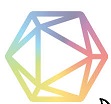Development Of Colored Flour Plasticine Educational Game Tools (Ape) To Improve Early Childhood Creativity At Kejora Paud In The 2024/2025 Academic Year
Abstract
This study aims to develop Color Flour Plasticine educational game tools in increasing children's creativity. The focus of this research are: 1) Describing the Characteristics of Colored Flour Plasticine Educational Game Tools in Improving Early Childhood Creativity. 2) Analyzing the Development Process of Colored Flour Plasticine Educational Game Tools in increasing Children's Creativity. 3) Knowing how the effect of using educational game tools of color flour plasticine on increasing the creativity of early childhood. 4) Describing the advantages and disadvantages of the Color Flour Plasticine Educational Game Tool in increasing Early Childhood Creativity at Kejora Early Childhood Education for the 2024/2025 school year.Based on a comprehensive analysis of the characteristics, development process, effects, and advantages and disadvantages of color flour plasticine APE at Kejora Early Childhood Education, it can be concluded that this media is an educational game tool that is effective in increasing the creativity of children aged 4-5 years. This plasticine meets the ideal criteria of Educational Game Tools with the characteristics of raw material safety, education, and has a soft texture and attractive color variations. Although it has limitations in durability and texture stability, its systematic development process through expert validation and field trials showed a significant increase in children's creativity (post-t score). Technical weaknesses can be overcome through proper storage and teacher assistance, so this APE is still recommended as an innovative solution for early childhood education with limited budgets that prioritize creative and child-friendly learning.
Keywords
Full Text:
PDFReferences
Andriani, D. dan R. (2023). Pengembangan Kreativitas Anak Usia Dini Menggunakan Media Berbasis Alam. Jurnal Pendidikan Anak Usia Dini, 7(2).
Arlinah, S., & Rohita. (2014). Meningkatkan Kreativitas Anak Melalui Bermain Plastisin pada Kelompok A Paud Plus Al Fattah jarak Kulon Kabupaten JOMBANG. Fkip Ump, 6–38.
Astini, B. N., Nurhasanah, N., & Nupus, H. (2019). Alat permainan edukatif berbasis lingkungan untuk pembelajaran saintifik tema lingkungan bagi guru paud korban gempa. Jurnal Pendidikan Anak, 8(1), 1–6. https://doi.org/10.21831/jpa.v8i1.26760
Gustina, Zipa dan Husnayayin, Atina, D. (2024). Karakteristik dan Langkah-Langkah Metode Penelitian Research and Develoment (Borg and Gall) Dalam Pendidikan. Jurnal Ilmiah Pendidikan Dasar, 9(4).
Hall, T., Meyer, A., & Rose, D. H. (2012). Universal Design for Learning in the Classroom: Practical Applications. Guilford Press.
Kemdikbud. (2016). Petunjuk Teknis Bantuan Alat Permainan Edukatif (APE) PAUD Tahun 2016. Direktorat pembinaan Pendidikan Anak Usia Dini.
Kemendikbud. (2024). Kurikulum Pada Pendidikan Anak Usia Dini, Jenjang Pendidikan Dasar, Dan Jenjang Pendidikan Menengah. Permendikbud Ristek Nomor 12 Tahun 2024, 1–26.
Kemendikbud Ristek. (2021). Bahan Ajar Profil Pelajar Pancasila Kementerian Pendidik Dan Kebud 5.
Kemendikbud Ristek. (2023). Permendikbud Nomor 46 tahun 2023 Tentang Pencegahan dan Penanganan Kekerasan di Satuan Pendidikan Episode ke-25.
Munandar, U. (2014). Pengembangan Kreativitas Anak Berbakat. PT Rineka Cipta.
Novi, M. (2019). Mengembangkan Kreativitas Anak Usia Dini. Remaja Rosdakarya .
Priyani, S. (2019). Pengaruh Penggunaan Media Plastisin Tepung Berwarnaterhadap Perkembangan Kreativitas Anak Usia Dini Di Ra Darush Sholihin Lampung Barat. Journal of Chemical Information and Modeling, 53(9), 1689–1699.
Rizky, Ainun dan Bachtiar, Yusri Muhammad, D. (2023). Pengaruh Penggunaan Media Plastisin Terhadap Kreativitas Pada Anak Usia 5-6 Tahun. Jurnal Pendidikan Guru Anak Usia Dini, 4(2).
Sugiyono. (2018). Metode Penelitian Kombinasi (Mixed Methods). CV Alfabeta.
Wahyuni, M. (2021). Penilaian Pertumbuhan dan Perkembangan Anak Usia Dini. Kemdikbud.
Waruwu, M. (2024). Metode Penelitian dan Pengembangan (R&D): Konsep, Jenis, Tahapan dan Kelebihan. Jurnal Ilmiah Profesi Pendidikan, 9(2), 1220–1230. https://doi.org/10.29303/jipp.v9i2.2141
Wulandari, A. P., Salsabila A., A. Cahyani K., Nurazizah T. S., & U. Z. (2023). Pentingnya Media Pembelajaran dalam Proses Belajar Mengajar. Journal on Education, 5(2), 3928–3936. https://doi.org/10.31004/joe.v5i2.1074
DOI: http://dx.doi.org/10.58258/jime.v11i3.9168
Refbacks
- There are currently no refbacks.
Copyright (c) 2025 NIKA FATWATURRAHIMI, MUHAJIRIN RAMZI, FITRIANI RAHAYU

This work is licensed under a Creative Commons Attribution-ShareAlike 4.0 International License.

JIME: Jurnal Ilmiah Mandala Education (p-issn: 2442-9511;e-issn: 2656-5862) is licensed under a Creative Commons Attribution-ShareAlike 4.0 International License.
Jurnal ini diterbitkan oleh Lembaga Penelitian dan Pendidikan (LPP) Mandala.
Alamat: Jl. Lingkar Selatan, Perum Elit kota Mataram Asri Blok O. No. 35, Jempong Baru, Sekarbela, Kota Mataram NTB.







.png)



